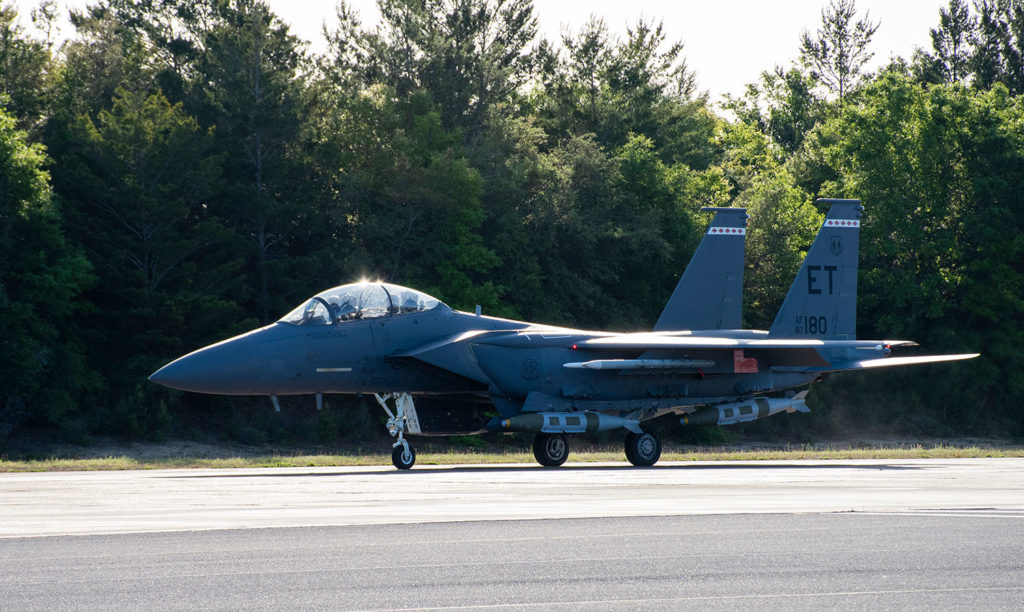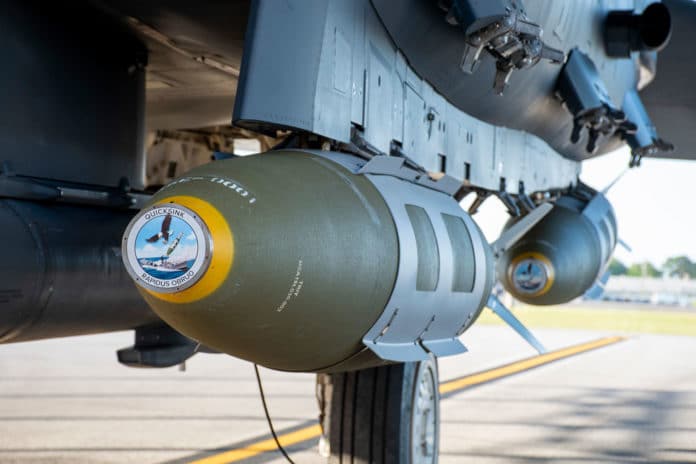The Air Force Research Laboratory (AFRL) and Eglin’s Integrated Test Team demonstrated a new low-cost, air-delivered capability for defeating maritime threats that successfully destroyed a full-scale surface vessel in the Gulf of Mexico. On April 28, an F-15E Strike Eagle fighter released one modified GBU-31 Joint Direct Attack Munition (JDAM) as part of this test, the second experiment in the QUICKSINK Joint Capability Technology Demonstration (JCTD).
The QUICKSINK program, conducted in collaboration with the U.S. Navy, aims to provide options to neutralize surface threats while demonstrating the inherent flexibility of the joint force. This JCTD uses a JDAM to rapidly deliver an immediate effect on stationary or moving maritime targets at minimal costs.
In this way, the USAF can achieve effects similar to torpedo attacks using heavy bombs at higher rates and over a larger area. While torpedoes predominantly sink enemy ships via submarines, new methods explored through QUICKSINK may achieve anti-ship lethality with air-launched weapons, including modified 2,000-pound JDAM precision-guided bombs.

The AFRL engineers are developing a weapon open systems architecture (WOSA) seeker to enable precise placement of the weapon. The implementation of WOSA also lowers costs by providing modularity via the ability to plug-and-play different manufacturers’ seeker components, which can lead to reduced weapon system costs and enhanced performance.
“Heavy-weight torpedoes are effective [at sinking large ships] but are expensive and employed by a small portion of naval assets,” said Maj. Andrew Swanson, 85th TES division chief of Advanced Programs. “With QUICKSINK, we have demonstrated a low-cost and more agile solution that has the potential to be employed by the majority of Air Force combat aircraft, providing combatant commanders and warfighters with more options.”
This latest experiment allowed researchers to assess the scientific and technology challenges associated with the QUICKSINK concept for operational use. “A Navy submarine has the ability to launch and destroy a ship with a single torpedo at any time, but the QUICKSINK JCTD aims to develop a low-cost method of achieving torpedo-like kills from the air at a much higher rate and over a much larger area,” said Kirk Herzog, AFRL program manager.
“The development of this technology is critical to maintaining U.S. technological superiority and addressing defined national security challenges,” said Gerry Tighe, OUSD(R&E) oversight executive for the JCTD. “This successful demonstration represents an important milestone.”
AFRL is the QUICKSINK program technical lead, while the operations manager is U.S. Indo-Pacific Command. Air Force program executive officer for weapons serves as the transition manager.
